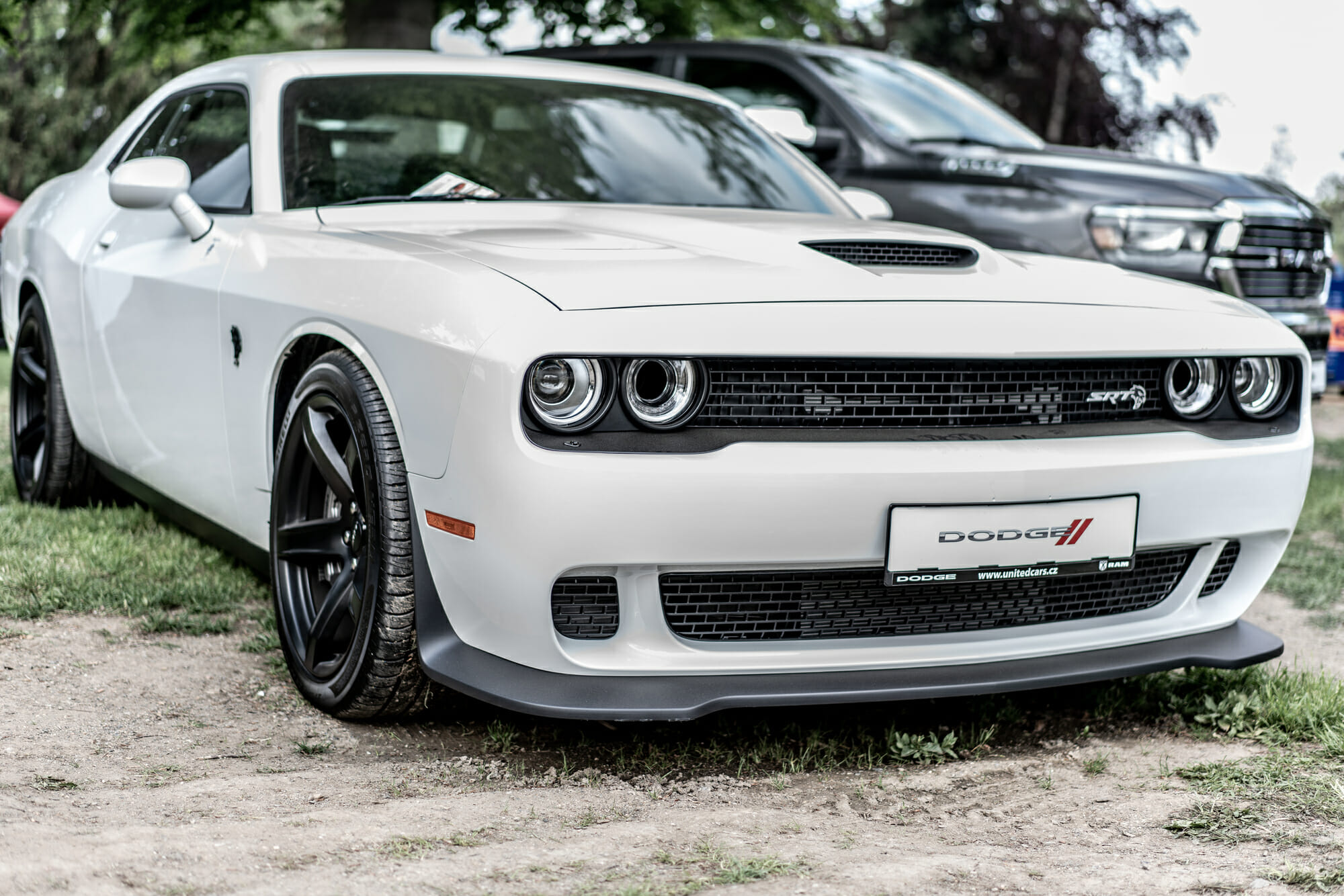
If a truly feisty ride is calling your name, set your sights on the Dodge Hellcat lineup. Wondering if these modern marvels deserve to wear the muscle car moniker? Well, the specs don’t lie, so take a peek and see just why these cars have everyone talking.
What are the most compelling Dodge Hellcat specs?
Well, there are quite a few, like:
- Sheer Power: Up to 807 horsepower in the Super Stock
- Torque for Days: Up to 707 lb-ft.
- Boogie to 60: 3.25 seconds from 0 to 60
- Quarter Mile: 10.5 seconds at 131 MPH
As Dodge continues to massage the Hellcat engine, they keep finding more power and adding trim levels to the Challenger lineup. If you want to find your Hellcat of choice, just look to the specs. To help you out, let’s talk about everything Hellcat and see where your preferences lie.
How the Hellcat Engine Came to Be
The Hellcat engine feels like it came screaming out of nowhere, and for good reason. The engineering team tasked with bringing it to life did all their work in utter secrecy. They planned and plotted behind closed doors in hopes of surprising the world with their creation. And they certainly did.
When they rolled out their stunning supercharged 6.2L (376 ci) V8 in 2015, no one could believe it was real.
With 707 horsepower and 650 lb-ft. on tap, this engine made the Challenger SRT faster than ever before. But they didn’t stop there. Oh no. They just had to keep massaging the build to produce even more power in the coming years.
For their 2020 Dodge Challenger lineup, they’ve rolled out three distinct levels of Hellcat power for you to choose from:
- Base: 717 horsepower and 656 lb-ft.
- Redeye: 797 horsepower and 707 lb-ft.
- Super Stock: 807 horsepower and 707 lb-ft.
Beyond that, they’ve made their base and Redeye trims available as a widebody, which adds 3.5-inches to its stance.
Hellcat Specs: The Insatiable Need for Speed
Prior to the creation of the iconic Hellcat engine, the Dodge Challenger SRT was plenty powerful when equipped with the 392. With that engine’s 485 horsepower and 475 lb-ft., this 4,330-pound car could rocket down the quarter-mile in 12.1-seconds at 115 MPH.
When the Hellcat was first released, it blew that record out of the water by racing down the quarter in 11.7 seconds at 125 MPH. And it’s only gotten better from there.
The Redeye trim? An incredible 10.8 seconds at 131 MPH. As it just has a bit more power squeezed out of its internals, the Super Stock runs the quarter-mile in 10.5 seconds at 131 MPH.
The Hellcat engine isn’t just faster than the 392. It’s altogether different. The engineers redesigned 90% of the parts used on the 392 to create a much more capable build. For starters, the Hellcat engine received a crankshaft and pistons made from ultra-strong forged steel. And they equipped it with aluminum-alloy cylinder heads.
They also put their focus on equipping it with an impressive 2.4L (146 ci) supercharger that works overtime. In fact, it works so hard that they had to place two air-cooled heat exchangers on it to keep it from overheating. In the end, it produces 11.6 PSI of boost, giving the V8 much more power on demand.
High Tech Features Bring It All Together
If you want to put all that power to the ground fast while at the drag strip, the launch control system in the Dodge Challenger SRT will help you do just that. You just have to push the button to activate it — and set your RPMs if you have the manual transmission.
Then, make sure it’s in gear, hit the brakes, and jam the gas to the floor. The second you let off the brake pedal, the car will start screaming down the track, making you look like a professional drag racer.
You won’t even have to wait to grab your slip at the end of the run to see how you did. Just tap into the Uconnect infotainment system to navigate to the SRT Performance Pages app. In there, you will get your quarter-mile time and a look at how you did 0 to 60.
The launch control system definitely optimizes your times, so skip it whenever you want to hone your skills running the quarter.
The Good and the Bad of the Dodge Hellcat Specs
Although the Dodge Hellcat lineup sounds like an exceptionally good time, it’s not for everyone. You have to weigh the pros and cons to see if this modern muscle car will meet your expectations.
Pros:
- Total beast down the straightaways
- Endless power on tap across all trim levels
- Available with a manual transmission and all-wheel drive
- Carries four people comfortably on short and long trips
- Lots of cargo space for your track gear or groceries
Cons:
- Not so adept through the twists and turns
- Poor fuel efficiency, especially at higher trim levels
- Can be expensive to maintain and repair
- Difficult to see out the rear window
- Crash test ratings leave much to be desired
As you pour over the good and the bad about the Hellcat-equipped cars from Dodge, you’ll likely find if this car is right for you. If you want all that Hellcat power, but in a bigger package, don’t forget about the Jeep Grand Cherokee Trackhawk. It has the same 707 horsepower supercharged engine as the early base Hellcat, just not in name.